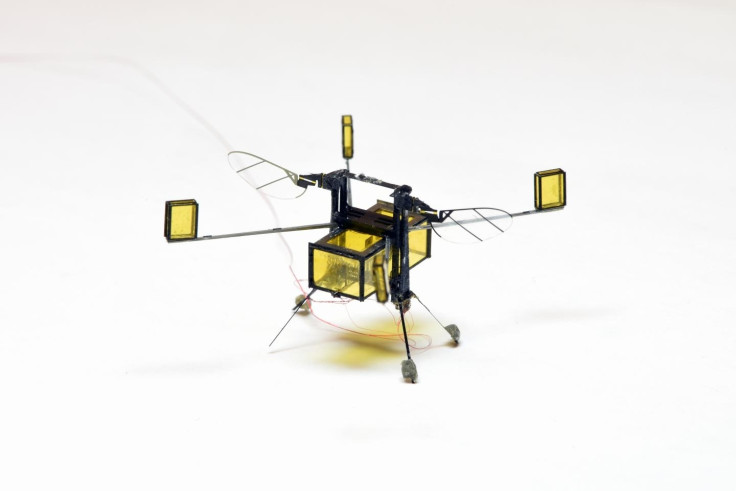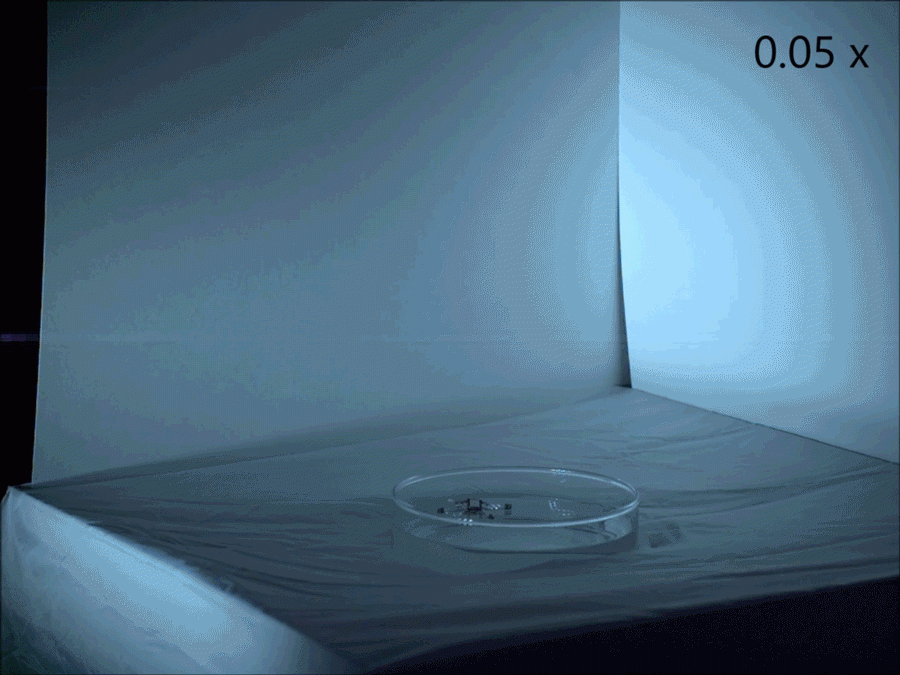Scientists create robotic 'bee' which can fly, swim and dive into water before shooting itself out
The robot has potential uses ranging from search-and-rescue operations to environmental monitoring and biological studies.

Researchers have developed a robotic 'bee' that can fly, swim, dive into water and shoot itself out again.
The latest generation of the so-called RoboBee is 1,000 times lighter than any previous aerial-to-aquatic robot and has potential uses ranging from search-and-rescue operations to environmental monitoring and biological studies.
The miniature robot was designed by scientists from the Harvard John A. Paulson School of Engineering and Applied Sciences (SEAS) and the Wyss Institute for Biologically-Inspired Engineering at Harvard. Their creation is described in a study published in the journal Science Robotics.
"This is the first microrobot capable of repeatedly moving in and through complex environments," said Yufeng Chen, first author of the paper. "We designed new mechanisms that allow the vehicle to directly transition from water to air, something that is beyond what nature can achieve in the insect world."
Designing a millimetre-sized robot that can move in and out of water presented numerous challenges for the team. Firstly, water is 1,000 times more dense than air, so the speed at which the wings flap have to be very different in the two mediums. If they flap too slowly, the robot will not be able to fly, but if they flap too fast, they will break in the water.
Using computer modelling and experimental data, the researchers designed the RoboBee to flap its wings at different speeds: between 9 and 13 hertz in water, and 220 to 300 hertz in in the air.
Another major hurdle for the team to overcome was trying to design the robot so that it could dive into water and then propel itself out again. The surface tension of water is more than 10 times the weight of the robot and three times its maximum lift, meaning it almost acts like a solid surface.

Previous research has shown how a powerful impact and sharp edges can help to break through the surface of the water when diving. But escaping again is another matter.
To enable the robot to propel itself out of the water, the scientists fitted the RoboBee with four flotation devices and a special gas chamber filled with combustible fuel. These buoyant devices push the robot to the surface so that the wings are out of the water, at which point a spark ignites the gas, propelling the robot out of the water. It has been designed to right itself in the air, so it will always land on its feet.
"Because the RoboBee has a limited payload capacity, it cannot carry its own fuel, so we had to come up with a creative solution to exploit resources from the environment," said Elizabeth Farrell Helbling, co-author of the paper. "Surface tension is something that we have to overcome to get out of the water, but is also a tool that we can utilize during the gas collection process."
"By modifying the vehicle design, we are now able to lift more than three times the payload of the previous RoboBee," said Chen. "This additional payload capacity allowed us to carry the additional devices including the gas chamber, the sparker, and buoyant outriggers, bringing the total weight of the hybrid robot to 175 milligrams, about 90mg heavier than previous designs. We hope that our work investigating trade-offs like weight and surface tension can inspire future multi-functional microrobots - ones that can move on complex terrains and perform a variety of tasks."





